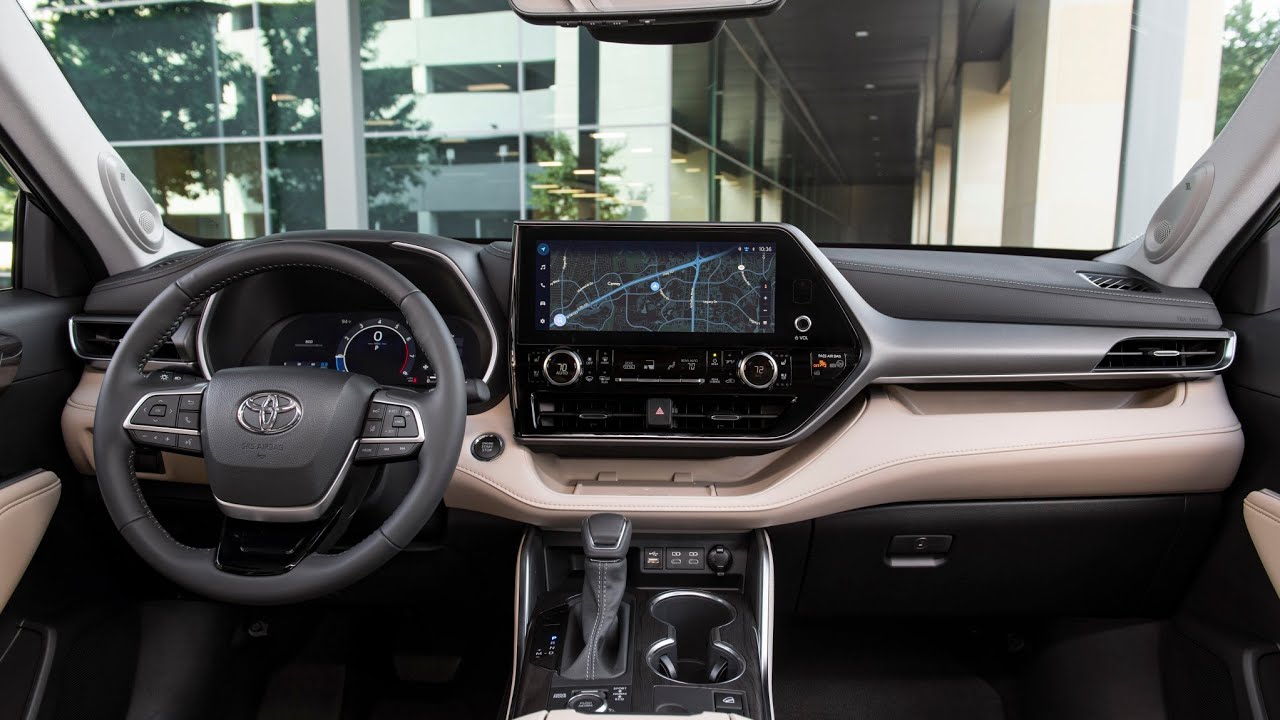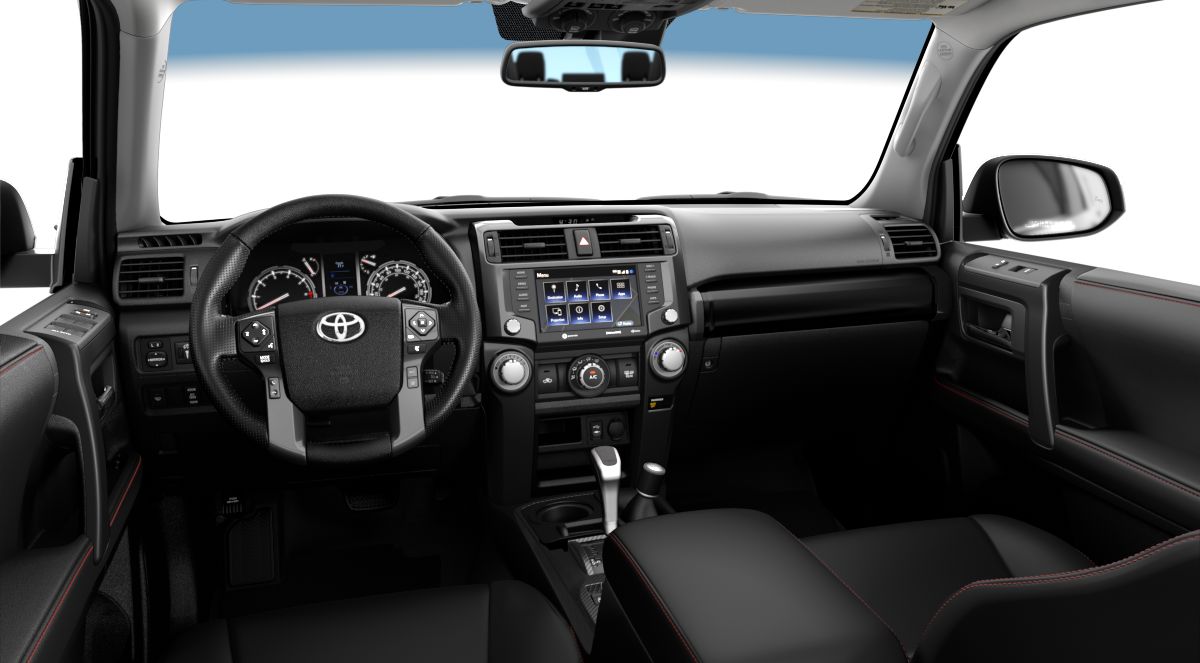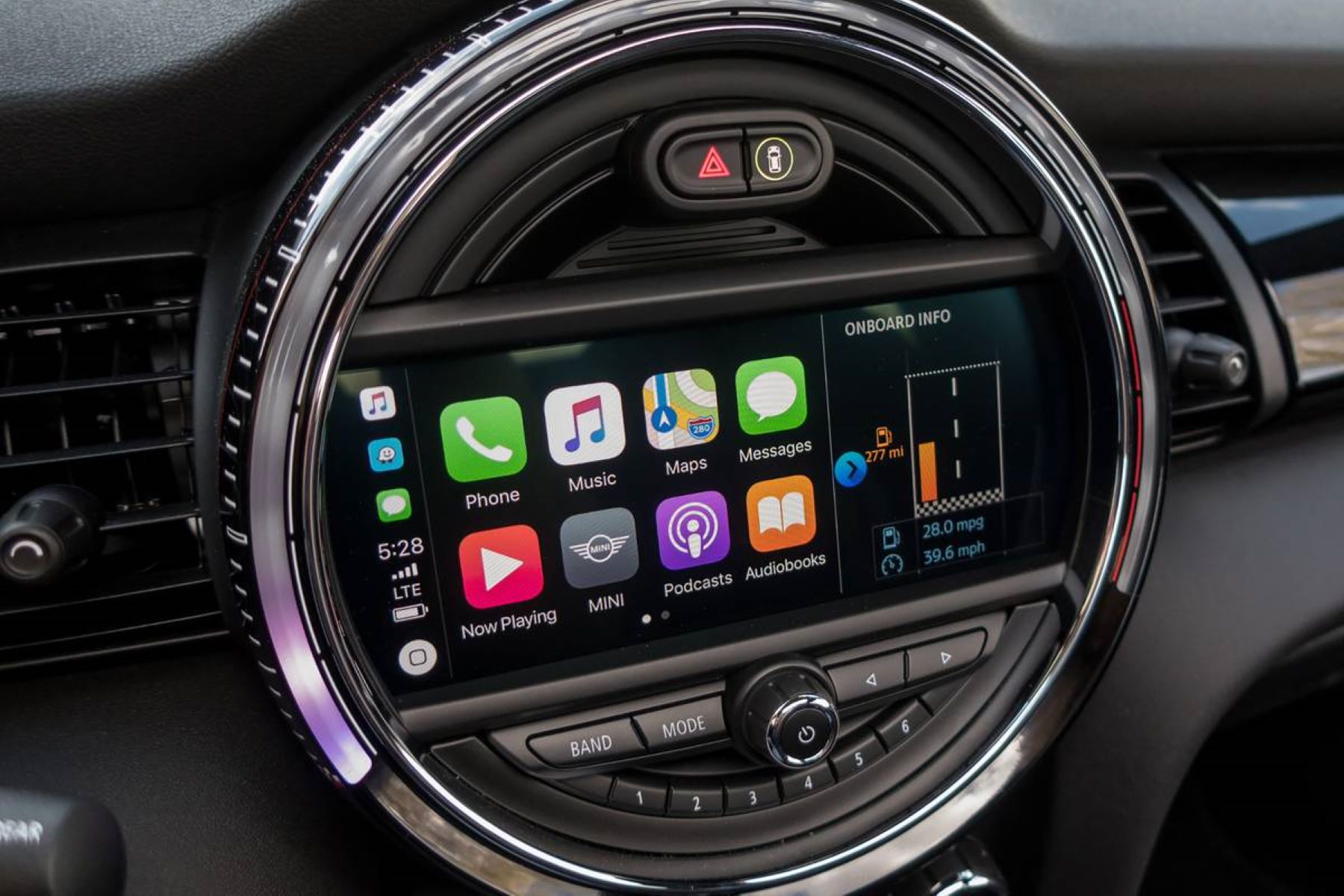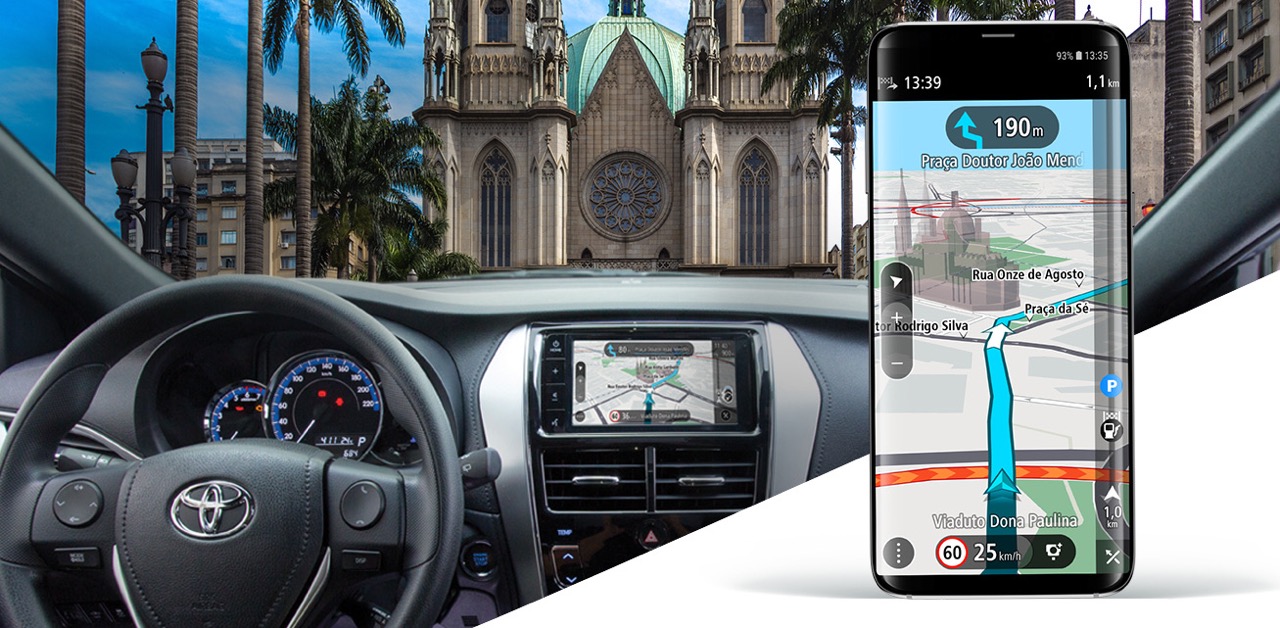Introduction
When it comes to driving on challenging terrains, safety and control are paramount. Toyota's Highlander, a popular choice among adventure enthusiasts and families alike, boasts an array of advanced features designed to enhance the driving experience. One such feature is the Downhill Assist Control (DAC), a sophisticated system that offers drivers an added layer of confidence when navigating steep descents and uneven surfaces.
The DAC is a testament to Toyota's commitment to innovation and safety, providing drivers with a tool to manage the vehicle's speed while descending steep slopes. This feature is particularly valuable for those who enjoy off-road adventures or frequently encounter hilly landscapes during their travels.
In this article, we will delve into the intricacies of the DAC in Toyota's Highlander, exploring its functionality, benefits, and tips for optimal usage. Whether you're a seasoned off-road enthusiast or simply interested in understanding the advanced capabilities of your vehicle, this exploration of the DAC feature in Toyota's Highlander is sure to provide valuable insights. So, buckle up and get ready to unravel the magic behind this impressive technology!
What is a DAC?
The Downhill Assist Control (DAC) is a cutting-edge feature integrated into Toyota's Highlander to facilitate safe and controlled descents on steep or slippery terrains. This innovative system is designed to provide drivers with enhanced stability and confidence when navigating downhill slopes, particularly in off-road or challenging driving conditions.
At its core, the DAC functions as an advanced driver-assist technology, leveraging the vehicle's onboard sensors and computerized control systems to regulate speed and braking while descending inclines. By automatically managing the vehicle's speed, the DAC alleviates the need for constant manual adjustments, allowing drivers to focus on steering and maintaining control in demanding driving environments.
The DAC operates by utilizing the vehicle's anti-lock braking system (ABS) and traction control system to modulate wheel speed and traction during downhill descents. This ensures that the vehicle maintains a controlled and steady pace, effectively mitigating the risk of skidding or loss of control on slippery or uneven surfaces. Furthermore, the DAC's seamless integration with the vehicle's drivetrain and braking mechanisms enables it to adapt to varying terrain conditions, providing consistent and reliable performance across a spectrum of landscapes.
In essence, the DAC serves as a technological guardian, empowering drivers to confidently tackle challenging descents without compromising safety or control. Its intuitive functionality and automated speed management capabilities make it an invaluable asset for drivers venturing into rugged terrains or encountering steep gradients during their journeys.
By harnessing the power of advanced engineering and intelligent control systems, Toyota's Highlander DAC epitomizes the brand's commitment to elevating driving experiences and prioritizing driver safety in diverse driving scenarios. Whether traversing mountainous trails, navigating slippery slopes, or simply maneuvering through hilly landscapes, the DAC stands as a testament to Toyota's dedication to equipping their vehicles with state-of-the-art features that redefine the boundaries of driving excellence.
Benefits of DAC in Toyota's Highlander
The inclusion of Downhill Assist Control (DAC) in Toyota's Highlander heralds a myriad of benefits that significantly elevate the driving experience, particularly in challenging terrains and adverse weather conditions. Let's delve into the compelling advantages offered by this innovative feature:
-
Enhanced Safety and Control: The DAC serves as a steadfast ally for drivers navigating steep descents, providing an additional layer of safety and control. By automatically regulating the vehicle's speed through precise braking and traction adjustments, the DAC minimizes the risk of skidding and loss of control, thereby fostering a secure and composed driving experience.
-
Optimized Performance in Off-Road Environments: For off-road enthusiasts and adventurers, the DAC proves to be a game-changer, enabling seamless navigation across rugged terrains and treacherous slopes. Its ability to maintain a consistent and manageable speed on uneven surfaces empowers drivers to conquer challenging landscapes with confidence, ensuring that the vehicle remains poised and responsive even in the most demanding off-road scenarios.
-
Reduced Driver Fatigue: The DAC's automated speed management alleviates the need for constant manual adjustments during descents, thereby mitigating driver fatigue and enhancing overall driving comfort. By assuming the responsibility of regulating speed, the DAC allows drivers to focus on steering and maintaining situational awareness, promoting a more relaxed and controlled driving experience.
-
Confidence-inspiring Descents: With the DAC at their disposal, drivers can approach downhill slopes with heightened confidence, knowing that the vehicle's speed is intelligently monitored and controlled. This assurance is particularly valuable when encountering steep gradients or navigating through adverse weather conditions, as the DAC empowers drivers to tackle descents with poise and assurance.
-
Seamless Integration with Vehicle Dynamics: The DAC seamlessly integrates with the Highlander's onboard systems, including the anti-lock braking system (ABS) and traction control, to deliver harmonized and responsive performance. This integration ensures that the DAC adapts to varying terrain conditions, providing consistent and reliable speed management across diverse landscapes.
-
Adaptability to Varied Driving Conditions: Whether traversing muddy trails, navigating snow-covered slopes, or descending rocky inclines, the DAC remains steadfast in its ability to deliver controlled descents across a spectrum of challenging driving conditions. This adaptability underscores its versatility and reliability, making it an indispensable asset for drivers venturing into diverse landscapes.
In essence, the DAC in Toyota's Highlander redefines the parameters of driving excellence by offering a suite of benefits that prioritize safety, control, and performance. Its seamless integration, adaptability, and confidence-inspiring functionality position it as a pivotal feature that amplifies the driving experience, particularly in scenarios where stability and control are paramount.
How DAC works in Toyota's Highlander
The Downhill Assist Control (DAC) in Toyota's Highlander operates as a sophisticated driver-assist system, meticulously designed to facilitate controlled descents on steep or challenging terrains. Leveraging a combination of advanced sensors, vehicle dynamics, and intelligent control mechanisms, the DAC seamlessly integrates with the vehicle's braking and traction systems to deliver a seamless and controlled descent experience.
When engaged, the DAC harnesses the vehicle's onboard sensors to detect changes in terrain gradient and wheel speed, enabling it to discern when the vehicle is descending a steep slope. Upon activation, the system assumes the responsibility of regulating the vehicle's speed, ensuring a gradual and controlled descent without requiring constant driver intervention.
The DAC achieves this by interfacing with the Highlander's anti-lock braking system (ABS) and traction control, orchestrating precise adjustments to wheel speed and brake pressure. This orchestration allows the DAC to modulate traction and braking force on individual wheels, effectively managing the vehicle's speed as it navigates downhill gradients.
Furthermore, the DAC's integration with the vehicle's drivetrain and stability control systems empowers it to adapt seamlessly to varying terrain conditions, ensuring consistent and reliable performance across a spectrum of landscapes. This adaptability is particularly crucial when encountering diverse off-road environments or navigating through challenging weather conditions, as the DAC remains steadfast in its commitment to delivering controlled descents regardless of external variables.
The seamless functionality of the DAC is underscored by its ability to maintain a steady and manageable speed, mitigating the risk of skidding or loss of control on slippery or uneven surfaces. This feature instills drivers with confidence, particularly when navigating through treacherous descents or encountering adverse weather conditions. By assuming the responsibility of speed management, the DAC allows drivers to focus on steering and situational awareness, fostering a more relaxed and composed driving experience.
In essence, the DAC in Toyota's Highlander represents a pinnacle of automotive engineering, redefining the parameters of safety, control, and performance in challenging driving scenarios. Its intuitive operation, seamless integration, and adaptability to diverse terrains position it as a pivotal feature that empowers drivers to conquer descents with confidence and assurance.
Tips for using DAC effectively in Toyota's Highlander
-
Understanding Activation: Familiarize yourself with the process of engaging the DAC in your Toyota Highlander. Typically, the DAC can be activated through a designated button or control interface, often located within easy reach of the driver. Prior to embarking on descents, ensure that the DAC is engaged to leverage its advanced speed management capabilities.
-
Moderate Speed Control: While the DAC adeptly manages speed during descents, it is beneficial to exercise caution and maintain a moderate speed when approaching steep gradients. By doing so, you provide the DAC with a stable foundation from which to initiate controlled speed adjustments, enhancing overall stability and control during descents.
-
Situational Awareness: Despite the DAC's automated speed management, maintaining situational awareness is crucial. Stay vigilant and anticipate changes in terrain, as well as potential obstacles or hazards. This proactive approach complements the DAC's functionality, allowing you to make informed steering adjustments and respond to evolving driving conditions.
-
Utilizing Low Gears: When descending steep slopes, consider engaging low gears to complement the DAC's performance. This strategic utilization of lower gears can further enhance the vehicle's stability and traction, working in tandem with the DAC to navigate challenging descents with precision and confidence.
-
Adapting to Terrain: Recognize the adaptability of the DAC to varied terrain conditions. Whether navigating rocky surfaces, muddy trails, or snow-covered descents, the DAC remains steadfast in its ability to deliver controlled performance across diverse landscapes. Embrace the versatility of this feature and trust in its ability to optimize speed management in challenging off-road environments.
-
Engaging Braking Support: While the DAC manages speed through the vehicle's braking system, it is beneficial to be prepared to engage manual braking support when necessary. Understanding the interplay between the DAC and manual braking allows you to fine-tune speed adjustments, particularly in scenarios requiring nuanced control or sudden changes in terrain.
-
Practice and Familiarization: Prior to tackling demanding descents, take the time to practice and familiarize yourself with the DAC's operation in controlled environments. This hands-on approach enables you to gain confidence in the feature's performance and understand its nuances, ultimately enhancing your proficiency in leveraging the DAC effectively during real-world driving scenarios.
-
Maintenance and Calibration: Regularly maintain and calibrate the vehicle's braking and traction systems to ensure optimal performance of the DAC. This proactive approach safeguards the DAC's seamless integration with the vehicle's onboard mechanisms, reinforcing its ability to deliver consistent and reliable speed management across a spectrum of driving conditions.
By embracing these tips and integrating them into your driving practices, you can harness the full potential of the DAC in your Toyota Highlander, elevating your driving experience and instilling confidence during challenging descents. The DAC stands as a testament to Toyota's commitment to innovation and safety, empowering drivers to navigate steep slopes with poise and assurance.
Conclusion
In conclusion, the Downhill Assist Control (DAC) in Toyota's Highlander represents a pinnacle of automotive innovation, redefining the parameters of safety, control, and performance in challenging driving scenarios. This advanced feature, meticulously designed to facilitate controlled descents on steep or challenging terrains, stands as a testament to Toyota's unwavering commitment to prioritizing driver safety and enhancing the driving experience.
The benefits offered by the DAC are compelling and far-reaching, encompassing enhanced safety, optimized performance in off-road environments, reduced driver fatigue, confidence-inspiring descents, seamless integration with vehicle dynamics, and adaptability to varied driving conditions. These advantages collectively position the DAC as a pivotal feature that amplifies the driving experience, particularly in scenarios where stability and control are paramount.
By seamlessly integrating with the vehicle's braking and traction systems, the DAC empowers drivers to navigate downhill slopes with heightened confidence, knowing that the vehicle's speed is intelligently monitored and controlled. The system's intuitive operation, seamless functionality, and adaptability to diverse terrains make it an indispensable asset for drivers venturing into challenging landscapes.
Furthermore, the DAC's effectiveness is enhanced through the implementation of best practices, including understanding activation, moderate speed control, situational awareness, strategic utilization of low gears, adaptation to varied terrain, engagement of braking support, practice and familiarization, and regular maintenance and calibration. By embracing these tips and integrating them into driving practices, drivers can harness the full potential of the DAC, elevating their driving experience and instilling confidence during challenging descents.
In essence, the DAC in Toyota's Highlander represents a harmonious fusion of advanced engineering and intelligent control systems, empowering drivers to conquer descents with confidence and assurance. Whether navigating treacherous off-road terrains, encountering steep gradients, or descending through adverse weather conditions, the DAC remains steadfast in its commitment to delivering controlled descents regardless of external variables.
Ultimately, the DAC epitomizes Toyota's dedication to equipping their vehicles with state-of-the-art features that redefine the boundaries of driving excellence. As drivers embark on journeys that demand precision, stability, and confidence, the DAC in Toyota's Highlander stands as a steadfast ally, ensuring that every descent is met with controlled poise and unwavering safety.

























